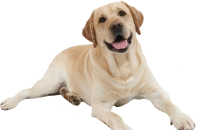The Fila Brasileiro is a Brazilian breed of large working dog of mastiff type. It is used as a guard dog, for cattle herding and for big-game hunting; it may also be kept as a companion dog or pet. In the eighteenth century, when slavery was still legal in Brazil, the Fila Brasileiro was used to return escaped slaves to their owners.
History[]
The Fila Brasileiro is thought to descend from European dogs brought to Brazil during the Colonial period, with little or no influence from indigenous South American dogs from the Pre-Cabraline era.
The Fila Brasileiro were bred and raised primarily on large plantations and cattle farms where they originated. In addition to cattle, jaguars, and other animals, these dogs were taught to chase down fugitive slaves.
The first written standard of the breed was edited in 1946. The Paulistas were responsible for organizing a planned breeding program and opening a stud book to register dogs. Dr. Paulo Santos Cruz began to systematically breed the Fila Brasileiro and also contributed largely in setting the CAFIB standard, and who now, therefore, has the right to be called the "father" of the Fila Brasileiro.
Appearance[]
In Brazil the breed has two main standards imposed by two distinct clubs, the Confederação Brasileira de Cinofilia, affiliated to FCI, and the Clube de Aprimoramento do Fila Brasileiro. The CAFIB standard was constructed based on the ancient phenotype of the breed. But the current CBKC/FCI standard is the best known internationally.
The Fila Brasileiro is a breed of mastiff with large bones and loose skin. According to the international breed standard, dogs should stand between 65 and 75 cm (26 and 30 in) at the withers and weigh no less than 50 kg (110 lb); bitches are slightly smaller, standing some 60–70 cm (24–28 in) and weighing at least 40 kg (88 lb). They have a rectangular build and though they are massive, their natural agility is apparent. The head is big and heavy with a deep muzzle. The ears are large, thick, tapered and either droop or fold back exposing the interior, depending on the dog's mood. The neck and back are well muscled and the chest is broad and deep. Unlike the vast majority of canines, the croup is higher than the withers. The legs are heavily boned. The skin is very distinctive of the breed, as it is thick and loose all over the body, mainly in the region around the neck. The thick skin forms pronounced dewlaps. In many individuals, the dewlaps proceed to the chest and abdomen. Some dogs show a fold at the side of the head and also at the withers descending to the shoulders. The coat is short and dense and the texture is normally smooth and soft. Their colours vary from solid, brindle, mouse-grey, patched, dappled, or black and tan. They are almost never white. Typical colours are fawn, black and brindle. Brindles of a basic color may have the stripes of either less or with very strong intensity. Sometimes a black mask is present.
The coat of the Fila Brasileiro is smooth and short. Black, fawns (red, apricot, or dark), and brindled (fawn, black, or brown brindle) colors are permitted, except mouse-grey, black and tan, blue, dappled and solid white. White markings, not exceeding 1/4 of the coat surface area, are permitted on the feet, the chest and the tip of the tail in the FCI standard.
The CAFIB standard does not accept black, mouse-grey, black and tan, blue, or dappled coats, as it considers them as a sign of crossbreeding; on the other hand, it accepts dogs with large white markings on any part of the body.
